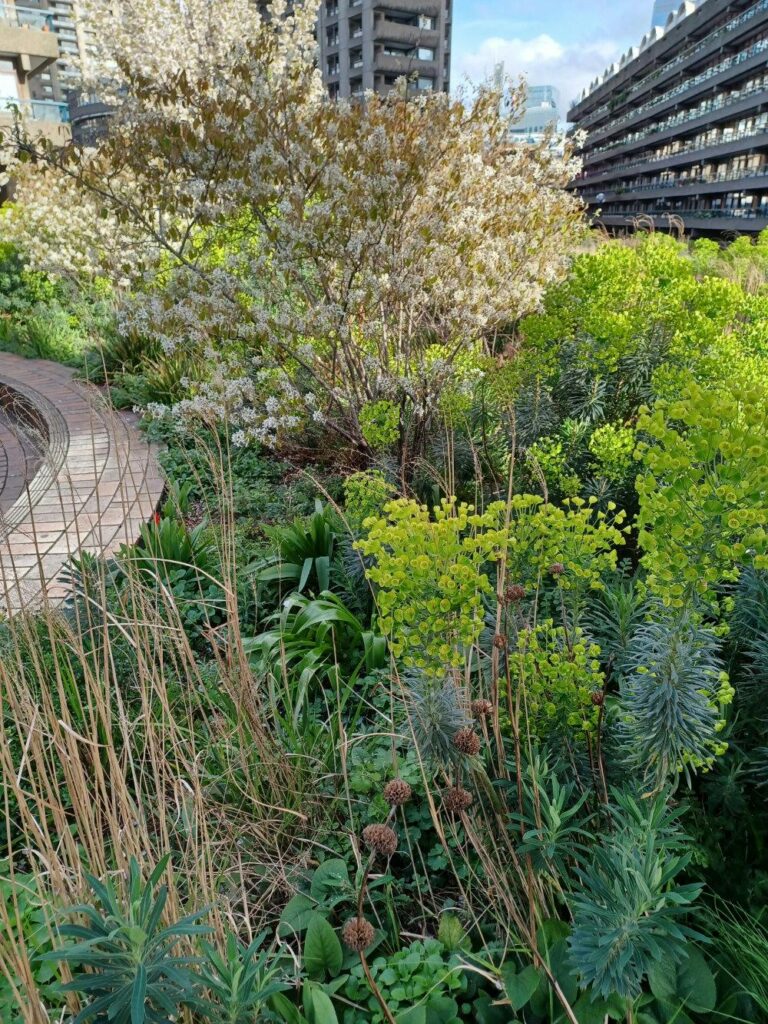Inside this edition of Natural Garden News
- A visit to the Barbican
- Ditch the mulch; plant densely
- Going beyond pollinators
- Recommended reading
- Right now in Haliburton
- From the socials
I hope you enjoy the newsletter! If you have any questions or feedback, please reply to this email.
Simon Payn
Grounded
hello@groundedgardens.ca
Follow us on the socials!
A visit to the naturistic gardens at the Barbican
I was lucky enough to see the work of the wonderful Nigel Dunnett the other day.
|
Gardens at the Barbican, created by Nigel Dunnett. March 2024. |
Dunnett, a professor at the University of Sheffield in the UK, has written the excellent book Naturalistic Planting Design, created the Grey to Green urban naturalization project in Sheffield, and, among many other things, designed the naturalistic gardens at London’s Barbican.
It was the Barbican I visited. It’s early spring over in the UK – plenty of greenery but not much colour. But it was still a good time to see the plantings because the lack of colour made me notice the textures. After all, gardens aren’t just about flowers – foliage has a huge role to play.
I talked to a man who was doing some spring maintenance. He told me with a huge smile on his face that he loved the gardens, which were so much more interesting than the grass elsewhere, and whose lushness contrasted with the concrete brutalism of the Barbican. His enthusiasm made me enthusiastic for what I’m doing here in Haliburton County. This is the reaction I want!
Dunnett doesn’t focus on native plants – they’re not a thing in the UK for various cultural and ecological reasons – but he does use naturalistic planting, with density, layers and plant communities. The garden, which is actually on a roof, creates three plant communities, according to the microclimates of each part of the site.
You can see more pictures of the gardens over on my website, from where you can click through to Dunnett’s website to see images of the gardens in the summer too.
|
|
|
Ditch the mulch; plant densely
Natural gardens use a dense matrix of plants that acts as its own “living mulch”. This approach does a better job of mimicking how plants actually behave. Read more.
|
|
|
|
Going beyond pollinators
The surge in popularity of pollinator gardens is good news. These gardens, teeming with bees, butterflies, and other insects and birds, have become symbols of ecological awareness and conservation. But here at Grounded we go further: we focus not just on pollinators but the whole ecosystem. Read more
|

